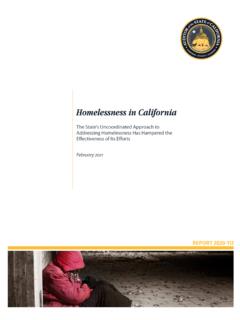Transcription of SOCIAL ACCOUNTABILITY MECHANISM - India
1 A generic frameworkSOCIAL ACCOUNTABILITY MECHANISMA guide for consideration in policy designNational Institute of Administrative ResearchLal Bahadur Shastri National Academy of AdministrationMussoorie - 248 179 EPABX Lines: + , 2630917 Fax: + : sponsored by :Department of Administrative Reforms and Public GrievancesMinistry of Personnel, Public Grievances and PensionsGovernment of IndiaStudy conducted by :National Institute of Administrative ResearchLal Bahadur Shastri National Academy of Administration, Mussoorie - 248 179a generic frameworkSOCIAL ACCOUNTABILITY MECHANISMA guide for consideration in policy designStudy sponsored by :Department of Administrative Reforms and Public GrievancesMinistry of Personnel, Public Grievances and PensionsGovernment of IndiaStudy conducted by :National Institute of Administrative ResearchLal Bahadur Shastri National Academy of Administration, Mussoorie - 248 179a generic frameworkSOCIAL ACCOUNTABILITY MECHANISMA guide for consideration in policy designStudy sponsored by :Department of Administrative Reforms and Public GrievancesMinistry of Personnel, Public Grievances and PensionsGovernment of IndiaStudy conducted by :National Institute of Administrative ResearchLal Bahadur Shastri National Academy of Administration, Mussoorie - 248 179i Contents Preface ii iii Acknowledgement iv Project Team v Sl.
2 No. Chapter Page No. 1. Introduction 1 6 2. Assessing ACCOUNTABILITY failures in Education and Health 7 19 3. Towards a framework for SOCIAL ACCOUNTABILITY 1: Getting the compact right 20 29 4. Towards a framework for SOCIAL ACCOUNTABILITY 2: strengthening citizen voice 30 37 5. SOCIAL ACCOUNTABILITY Initiatives: Challenges and Vulnerabilities 38 39 6. Institutionalizing SOCIAL ACCOUNTABILITY : some policy considerations to overcome the challenges and vulnerabilities 40 43 7. 8. Enabling SOCIAL ACCOUNTABILITY : some consideration for policy design Institutionalizing SOCIAL ACCOUNTABILITY : Recommendations for policy design 44 51 52 55 APPENDICES Appendix 1 56 62 Appendix 2 63 ii Preface The study on SOCIAL ACCOUNTABILITY is an initiative of the Department of Administrative Reforms & Public Grievances, Government of India , which intends to explore the ways and means of enhancing the ability of citizens (especially the poor and the marginalized) to engage with public servants and politicians in a more informed, direct and constructive manner so as to improve public service delivery.
3 National Institute of Administrative research (NIAR), Lal Bahadur Shastri National Academy of Administration (LBSNAA) Mussoorie has been entrusted with the task of developing generic framework on SOCIAL ACCOUNTABILITY mechanisms which can be broadly applied in various SOCIAL sector programmes and schemes. SOCIAL ACCOUNTABILITY implies the engagement of civic organizations to express demand for public services, and exact ACCOUNTABILITY from local service providers to improve service quality. SOCIAL ACCOUNTABILITY is being increasingly recognized by state and non state institutions as a means of enhancing democratic governance and improving service delivery. It refers to a broad range of actions and mechanisms that citizens, communities, independent media and civil society organizations use to hold public officials and public servants accountable. In recent years, the expanded use of participatory data collection and analysis tools, combined with enhanced space and opportunity for citizen and civil society engagement with the state, have led to a new generation of SOCIAL ACCOUNTABILITY practices.
4 These methods and tools are being increasingly used across different parts of India , South Asia, and the world. Some of the practices that have been applied are: Participatory Planning and Policy Formulation (Kerala, Brazil, Bangladesh); Participatory Budget Analysis (Gujarat); Participatory expenditure Tracking System (Uganda, Delhi, Rajasthan); Citizens Surveys/Citizen Report Cards (Bangalore, Maharashtra, Ukraine, Philippines, Pakistan); Citizen Charters (Andhra Pradesh, Karnataka); and Community Scorecards (Malawi, Maharashtra, Andhra Pradesh) In addition to these methods and tools, many more exist such as campaigns for electoral reforms, public interest litigation, SOCIAL audits, independent evaluation and so forth. It has been well established that SOCIAL ACCOUNTABILITY mechanisms can contribute to improved governance, accelerate development, create effectiveness through better service delivery and empowerment.
5 The overall objective of these mechanisms is to promote transparency and ACCOUNTABILITY in the service delivery processes. iii The key areas for the use of SOCIAL ACCOUNTABILITY methods are in: o the preparation, implementation, monitoring and evaluation of poverty reduction strategies; o public sector reform and public expenditure management processes; o community driven development programs; and o sectoral interventions ( , in health, education, transport, water and sanitation, rural development and urban development programmes (and) The NIAR in this study has tried to study the various challenges and vulnerabilities that come in way of institutionalizing SOCIAL ACCOUNTABILITY and how possibly these can be tackled. Also an attempt has been made to identify the manner in which the existing institutional designs can be made more accountable and accurate. In addition to this, it is equally important to strengthen the citizen voice to empower the community to hold the system accountable and in turn take benefit of the various schemes and programmes.)
6 Keeping this changing scenario in view, the NIAR has attempted to study the ACCOUNTABILITY failures in India and in turn study the potential ways of enhancing SOCIAL ACCOUNTABILITY in two flagship programmes, namely, Sarva Shiksha Abhiyan (SSA) and National Rural Health Mission (NRHM). The framework was discussed during the workshop held at New Delhi on under the chairmanship of Additional Secretary & Officials of DAR&PG and experts from various organizations. The suggestions have been incorporated in the framework. We hope that the generic framework designed will be a guiding instrument for policy makers and programme implementing officials to make the system more accountable, transparent and efficient and, in turn make the programmes launched by the government more accessible to the poor, marginalized and disadvantaged segments of the society apart from the general public and, will help in poverty reduction and development of the country.
7 Tejveer Singh, IAS Executive Director, NIAR, LBSNAA, Mussoorie iv Acknowledgements The study on SOCIAL ACCOUNTABILITY Mechanisms has been an excellent learning opportunity for NIAR that facilitated in the identification of various challenges and vulnerabilities that come in way of institutionalizing SOCIAL ACCOUNTABILITY . Also an attempt has been made to identify the manner in which the existing institutional designs can be made more accountable and accurate. The study attempted to study the ACCOUNTABILITY failures in India and analyze ways to enhance SOCIAL ACCOUNTABILITY in various programmes being implemented by the government of India . The framework is a result of the continual guidance and support from primary stakeholders. Also, NIAR, LBSNAA received substantial and consistent support from many individuals and institutions. We are grateful to the Department of Administrative Reforms and Public Grievances, Ministry of Personnel, Public Grievances and Pensions, Govt.
8 Of India , for providing us this excellent learning opportunity and invaluable guidance in accomplishment of the study and bringing the framework to its present perspective. Our sincere thanks go to the officials of DAR&PG, specially to Sri Singh, Additional Secretary; Sri Jha, Joint Secretary; Ms. Meenakshi Sharma, Director (AR) and Sri Rahim, Deputy Secretary, who have provided unstinting support, guidance and impetus necessary to carry out this study. We take this opportunity to express our gratitude to Public Affairs Centre, Bangalore and Centre for Good Governance, Hyderabad for guiding us in designing the tools for conducting the field study. We are also very much thankful to Action Aid in Bihar, SEWA in Uttarakhand and Kerala Institute of Local Administration (KILA) and Institute of Management in Government (IMG) in Kerala for providing experienced manpower in conducting field study. We extend our heartiest thanks to Shri Rudra Gangadharan, IAS, Former Director, LBSNAA & Chairman, NIAR who has provided the support and impetus necessary to carry out this study, and to Shri Padamvir Singh, IAS, Director, LBSNAA & Chairman, NIAR for his encouragement and guidance.
9 We also thank the faculty and staff of the NIAR for their cooperation and support. We are also grateful to many others who helped us at various stages of this study. Project Team v Project Team Alok Kumar, IAS Tejveer Singh, IAS Former Executive Director Executive Director Dr. Bisht Principal Project Coordinator Ms. Yamini AiyarExternal Project Consultant Dr. Singh Project Coordinator Shri Bala PosaniSenior Research Analyst Shri Sanjeev Sharma Associate Project Coordinator Shri Abhijit PatnaikSenior Researcher .. Prof. Khullar Scholastic Support 1 Chapter 1 Introduction SOCIAL ACCOUNTABILITY has been defined as an approach towards ensuring ACCOUNTABILITY that relies on civic engagement, , in which ordinary citizens and citizen groups participate directly or indirectly in exacting accountability1.
10 In a public sector context, SOCIAL ACCOUNTABILITY refers to a wide range of actions and mechanisms that citizens, communities, independent media and civil society organizations can use to hold public officials accountable. Evidence from around the world suggests that SOCIAL ACCOUNTABILITY mechanisms can contribute to improved governance, increased development effectiveness through better service delivery, and citizen empowerment. However, critical to the success of SOCIAL ACCOUNTABILITY initiatives is civil society and state capacities, and the synergy between the two. Ultimately, the effectiveness and sustainability of SOCIAL ACCOUNTABILITY mechanisms is improved when they are institutionalized . This involves two things: first, the state as a willing accomplice in the broader ACCOUNTABILITY project, needs to render its own internal mechanisms in a way that makes it structurally amenable to ACCOUNTABILITY , and second, the state needs to identify and adopt mechanisms to facilitate and strengthen civic engagement and citizen voice.

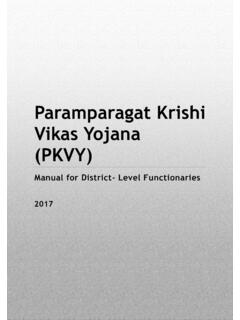
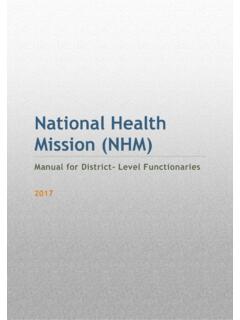

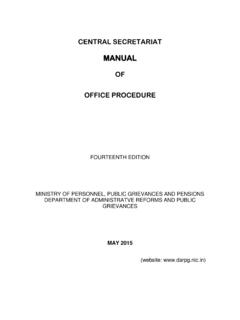







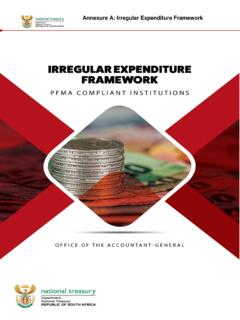

![¤ÉVÉ] BÉEÉ ºÉÉ®](/cache/preview/2/e/8/9/2/c/5/d/thumb-2e892c5d2e4db02606c3fe54c468c824.jpg)

